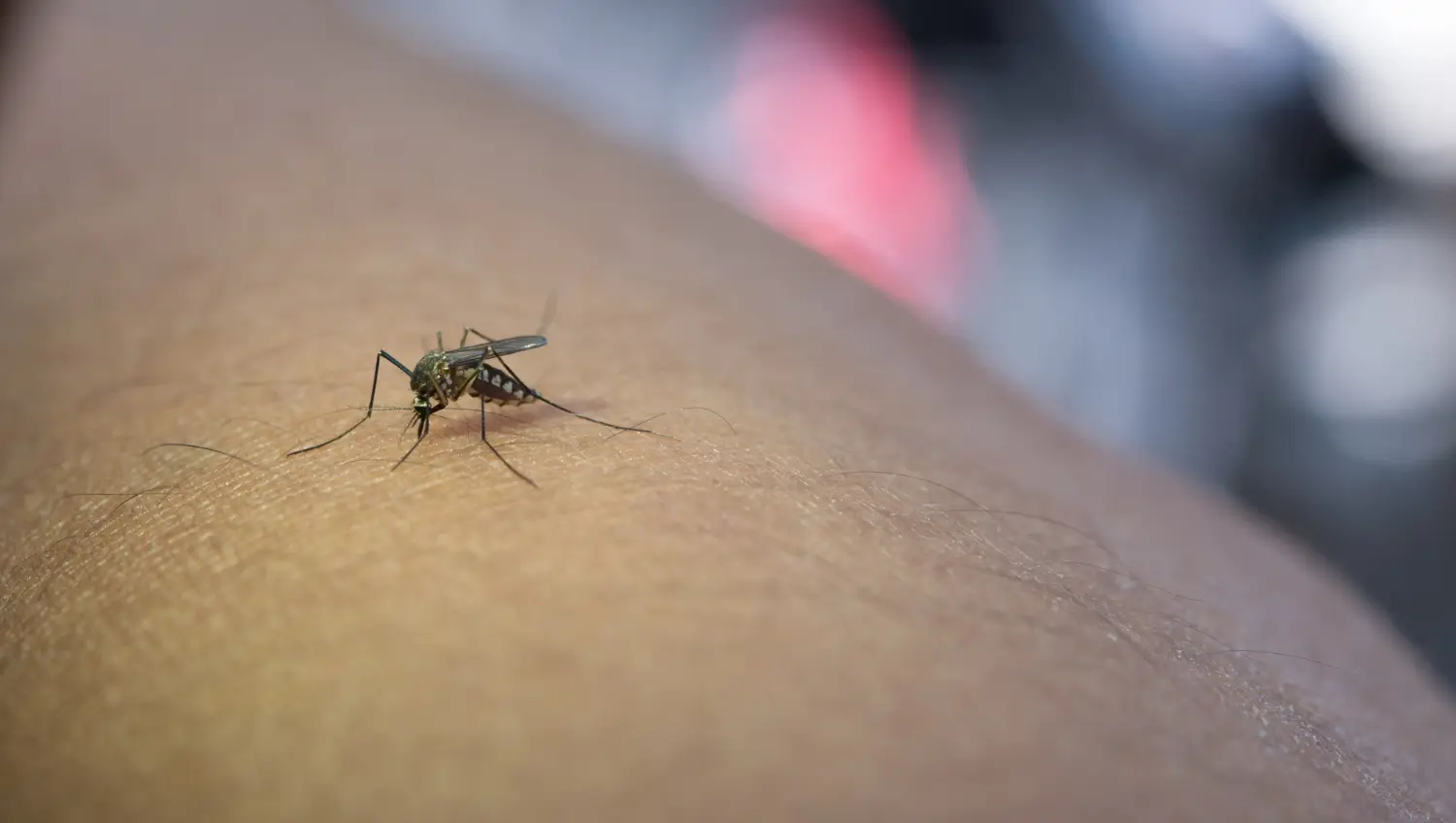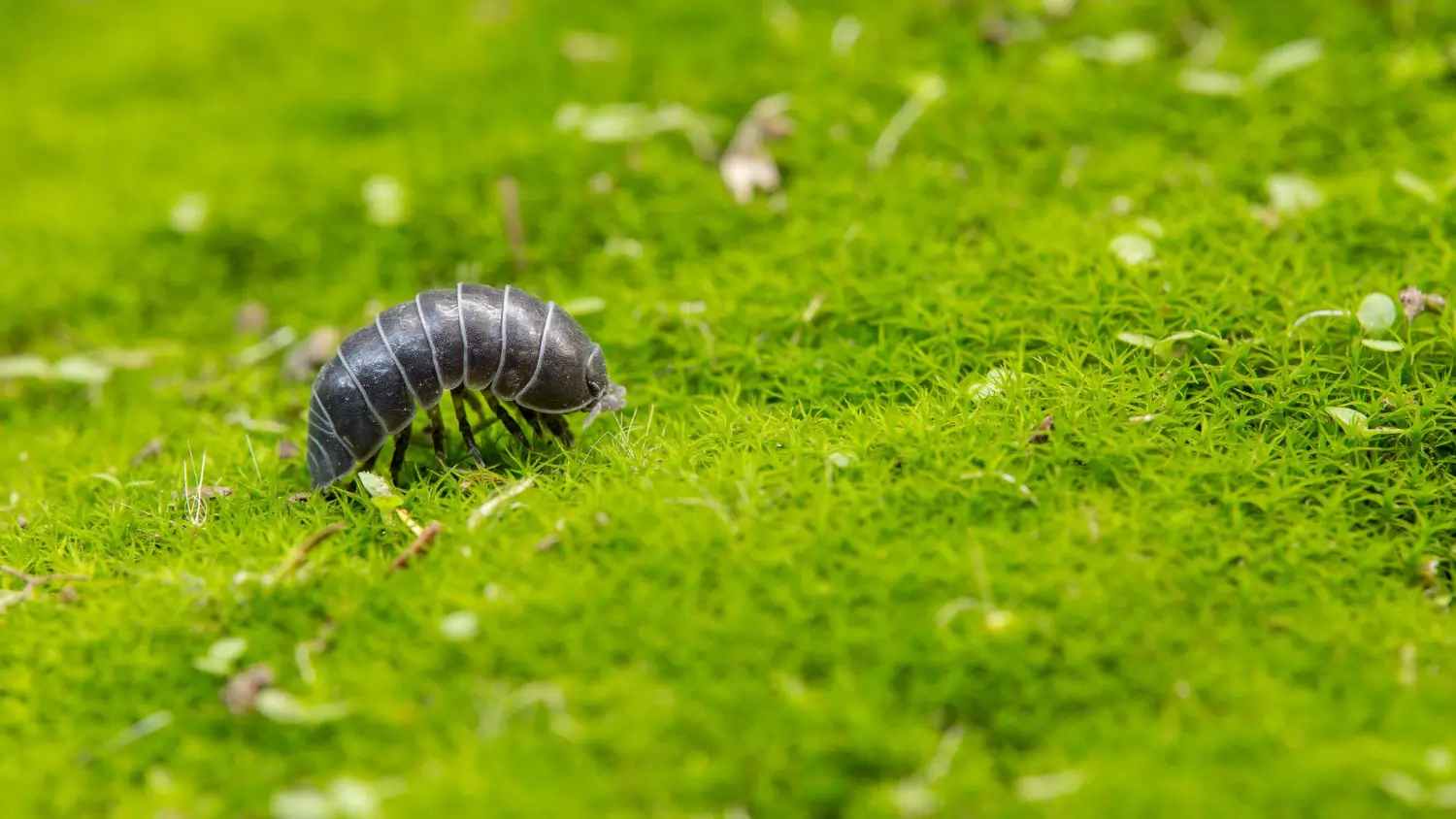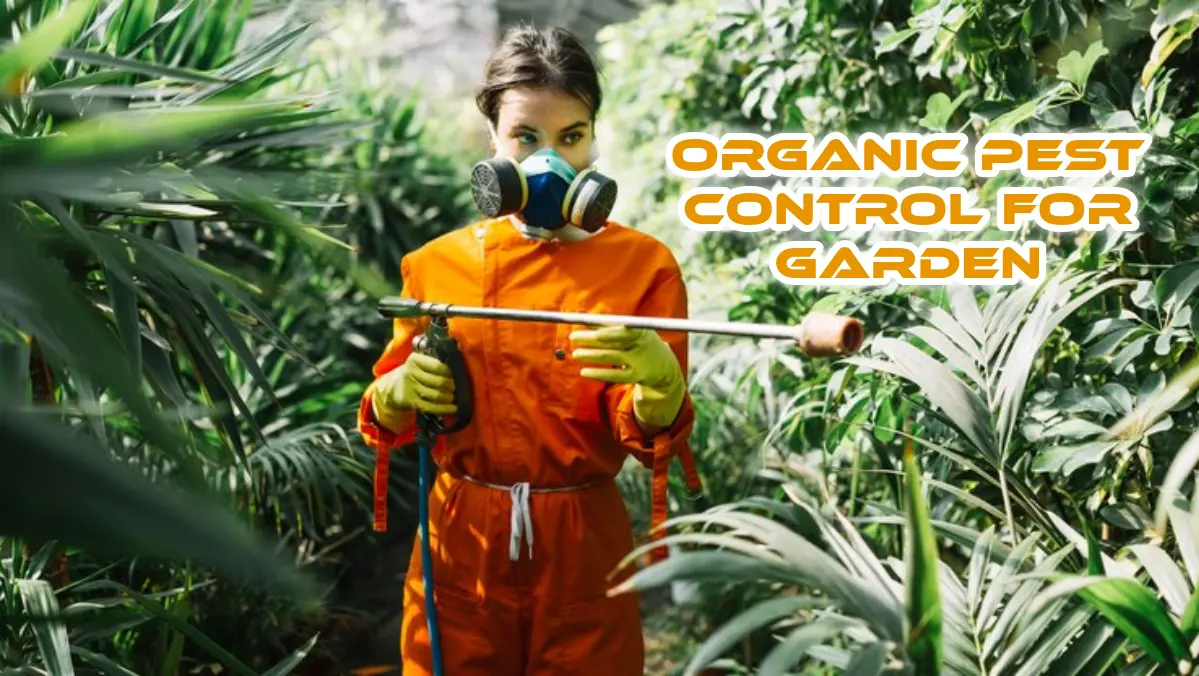
April 29, 2025

A green lawn can beautify a home, although hidden issues can harm it, transforming vibrant grass into patches of brown. Small insects, such as Japanese beetles and June bugs, in their early stages of development as grubs, can damage lawns by consuming grass roots and creating bare spots.
Grubs annoy homeowners and can seriously damage lawns by weakening the grass. Early signs of grub damage include wilting grass, soft soil, and increased digging by animals searching for grubs. Recognizing these signs early helps prevent lasting damage, and using Grub Killer can be an effective solution. This pesticide targets grubs in their initial development stage, using ingredients that disrupt their nervous systems, leading to their eventual elimination.
Managing grubs is crucial for keeping a lawn healthy and beautiful. Growcycle is a popular choice for gardeners looking for high-quality pesticides. Their products, including Grub Killer, are eco-friendly and totally tested to protect both plants and the environment. Grub Killer is specially designed to target grubs, helping plants thrive without the threat of pest damage.
The young forms of several beetle species are known as lawn grubs, including:
These little creatures usually live underground, where they eat grass. Even though lawn grubs are small, they can create many problems for lawns and gardens if they are not controlled in time.
They can harm the grass when their numbers grow, making it unhealthy, patchy, and brown. It is important to watch these pests to ensure they do not cause too much damage.
Understanding the life cycle of grubs is essential for effective lawn care. Here's a concise overview:
During the larval stage, when grubs are still growing and developing, they are particularly weak and can be effectively treated. This is why it is the best time to use grub killers, as they can help control the grub population and protect the health of the grass. Taking action during this stage is important to ensure a beautiful and healthy lawn for everyone to enjoy.
Remember that early signs of grub damage can help save a lawn from serious harm. Some important signs are:
Finding grubs early is very important because the sooner the problem is recognized, the simpler it will be to take care of it. This can help keep the lawn healthy and strong, preventing further damage from the grubs.
There are different products for grub killers, each with pros and cons. However, there are two main categories: chemical and natural solutions.
Chemical grub killers are specially made to kill grubs quickly and offer lasting protection. These products work by interrupting grubs' life cycle, which helps prevent them from causing more harm to plants and lawns.
Some common active ingredients in these killers are imidacloprid and chlorantraniliprole. These components have shown highly successful results in fighting off grubs and maintaining the health of yards and gardens. Using chemical grub killers can make it easier to manage grub problems and protect the beauty of outdoor spaces over time.
Usually available in liquid or granular form, these items enable a variety of application techniques. Although chemical solutions provide quick outcomes, the environment and beneficial insects may be at risk. To reduce any adverse effects, it is essential to carefully follow the directions provided by the manufacturer.
Environmentally conscious people are increasingly choosing natural grub treatments. These products use helpful tiny creatures, like nematodes, to fight against grubs in the soil. They are an efficient way to get rid of grubs without causing any damage to the ecosystem.
One of the best things about these solutions is that they are safe for pets, children, and other animals that are not the target. This makes natural grub solutions great for many people looking for eco-friendly garden and yard options.
While natural solutions may take longer to show visible results, they offer a sustainable approach to pest management. They often require multiple applications to achieve optimal effectiveness, especially in severe infestations.
Choosing the right grub killer is essential for a healthy, pest free lawn. With many products available, it’s important to consider factors beyond just the label. Understanding what works best for specific needs and timing can make a big difference in results.

The journey through the world of organic pest management has revealed the challenges posed by various pests and the multitude of solutions available to growers and gardeners.
LEARN MORE →Here are some key factors to guide gardeners in selecting the most effective grub killer for their lawns.
When choosing an appropriate grub killer, it is vital to assess the lawn's size and the severity of the grub infestation. Larger lawns may require more substantial treatments, affecting the type and amount of grub killer needed. A product that can be applied using large-scale sprayers or spreaders might be more efficient for large areas.
Simultaneously, understanding the severity of the infestation is crucial; mild infestations might only need natural grub solutions, whereas severe cases might call for stronger chemical interventions. Considering these factors ensures that the treatment is both effective and economical, protectig the lawn's health without unnecessary expenditure.
Safety for pets and children must be considered when selecting grub control solutions. Chemical grub killers, while effective, may pose risks if ingested or if direct contact occurs shortly after application.
To reduce these risks, always follow the manufacturer's safety instructions, including those regarding application and waiting intervals. Children and dogs must be kept away from treated areas until it becomes safe and the chemical has adequately absorbed or dried.
On the contrary, natural grub solutions offer a mostly safer alternative, making them appealing to pet-owning households and families with young children. These environmentally friendly methods, such as those using beneficial nematodes, are non-toxic and can be safely applied without concern for harmful residues.
Budget restrictions are a major deciding factor when planning to use grub control measures. Chemical grub killers tend to be more expensive due to their synthetic ingredients and faster-acting nature, potentially requiring a substantial upfront investment, especially for larger areas.
In contrast, while generally more affordable, natural solutions might require repeated applications to achieve the same level of effectiveness, impacting long-term costs. Homeowners should consider the frequency of application, the intended result, and the initial cost. Additionally, buying in bulk or during seasonal promotions can help reduce costs for both chemical and natural products.
The application method for grub control products and their ease of use can greatly influence a homeowner's decision to choose the right product. For chemical grub killers, options often include granules, liquid concentrates, or ready-to-use sprays that might require specific equipment, such as spreaders or sprayers.
Granular products can be easily dispersed using a broadcast spreader, whereas liquid formulations might need a hose-end sprayer for uniform coverage. These products typically offer detailed instructions to ensure proper application rates and timing, which are crucial for effective results.
In contrast, natural grub solutions generally involve applying beneficial organisms like nematodes, which are typically mixed with water and applied using a watering can or garden hose attachment. This process can be simple, making it accessible even for new gardeners. However, natural solutions can require close attention to factors like soil moisture and temperature to guarantee that the beneficial organisms flourish.
The ease of application and the amount of effort required should be weighed alongside the effectiveness of the product to determine the most suitable choice for maintaining a healthy, pest-free lawn.
Timing is critical when implementing grub control measures to ensure optimal effectiveness. Grubs' life cycle typically tells the best time for treatment, with late summer or early fall being ideal. During this period, grubs are smaller and closer to the soil surface, making them more susceptible to treatment.
Applying grub control products too early or too late in the season may result in less effective pest management as grubs become larger and burrow deeper into the soil. Additionally, monitoring weather conditions can influence the application timing.
For example, applying moist soil treatments can boost absorption and distribution while avoiding extreme weather conditions, like heavy rain, preventing product runoff or dilution. Gardeners should align their treatment schedules with regional pest activity reports and adjust accordingly to effectively control grub populations.
The effectiveness and speed of results are major factors in determining the suitability of grub control products. Chemical grub killers, with their potent, synthetic formulations, often produce swift results, quickly reducing grub populations and fixing the affected lawns.
This rapid action can be particularly advantageous during severe infestations requiring immediate intervention. However, the efficiency of these chemical treatments depends on precise application and timing, requiring users to adhere closely to guidelines to achieve the desired impact.
On the other hand, natural grub solutions tend to operate more subtly and over an extended period. While they may not deliver immediate results, their long-term efficacy promotes a balanced ecosystem that naturally controls pest populations. These biological treatments, such as using beneficial nematodes, gradually improve lawn health, supporting sustainable pest management with consistent application.
It's important to know how grub killers and other lawn care treatments work together when using them. Combining grub control with fertilizers, herbicides, and insecticides can help your lawn stay healthy and strong.
Chemical grub killers may have specific usage restrictions, as their active ingredients can potentially interfere with or diminish the efficacy of other lawn treatments if applied simultaneously. It's essential to read product labels for compatibility guidelines and suggested waiting periods between applications to avoid negative reactions, such as nutrient lock-up or chemical burn.
Conversely, natural grub solutions typically pose fewer compatibility issues as they work harmoniously with the lawn's natural ecosystem. However, it's still advisable to maintain a schedule that allows for effective integration with other treatments, ensuring that beneficial organisms like nematodes are not adversely affected by nearby applications.
By carefully coordinating grub control measures with other lawn care practices, gardeners can optimize the health and appearance of their lawns without compromising the effectiveness of the product.
Understanding the environmental impact of grub control products is important for those looking to maintain sustainable gardening practices. Chemical grub killers can sometimes disrupt the balance of the ecosystem. These chemicals may unintentionally harm non-target organisms, such as beneficial insects, earthworms, and soil microbes. Additionally, chemical runoff can affect nearby water sources, leading to broader environmental concerns.
On the other hand, natural grub solutions offer eco-friendlier alternatives. Gardeners can employ biological control agents, such as beneficial nematodes, to control grub populations without endangering the health of the ecosystem.
These solutions work synergistically with the soil's natural inhabitants, promoting biodiversity and contributing to a resilient garden environment. In the end, using ecologically friendly grub management techniques can maintain a lush, healthy lawn while assisting in protecting the delicate natural balance.
With numerous products available, choosing the best grub killer is important. Here are some highly-rated options to consider:
Scotts® Grub B Gon® is an advanced solution for tackling grubs that damage lawns and gardens. This product is specially formulated to provide effective control by attacking grubs in their early stages. Using natural ingredients, GrubGone Max is safe for both the environment and beneficial insects like bees, making it an eco-friendly choice.
When applied according to instructions, it targets the feeding larvae, causing them to stop eating and eventually perish. This ensures the lawn remains healthy and thriving, free from the destructive effects of grub infestations. With GrubGone Max, maintaining lush, green turf becomes an achievable goal.
Scotts® GrubEx®₁ is a powerful solution designed to protect lawns from grubs for an entire season. This product is formulated to effectively target and eliminate grubs before they can damage grass roots. One application in the spring or early summer helps to stop grubs from hatching and feeding on the lawn.
Scotts GrubEx1 works by disrupting the grub's life cycle, preventing it from maturing and causing harm. It's easy to use and safe for lawns when applied according to the instructions on the packaging. It lasts long for a year and provides effective results for a thriving garden.
It is a fast-action pesticide that is easy to apply with a spreader. Hi-Yield Grub Free Zone Granules is a reliable solution to protect lawns from harmful grubs. These granules are easy to spread and work by interrupting the life cycle of grubs, preventing them from damaging the grassroots.
To ensure maximum effectiveness, the product is best applied during the early stages of the grub's lifecycle, usually in late summer to early fall. As the granules dissolve, they release their active ingredients into the soil, targeting grubs hidden beneath the surface.
Proper application techniques are essential to achieve the best results in grub control. These tips and methods will help gardeners use grub control products efficiently:
Choosing the right tools for grub control application significantly impacts the product's effectiveness.
Sprayers: Handheld, backpack or hose-end sprayers work well for liquid grub control products. A backpack sprayer is ideal for larger areas as it provides broad, even coverage, ensuring every part of the lawn is treated thoroughly.
Spreaders: For granular grub control products, spreaders are essential. Two main types are commonly used:
Proper lawn preparation is crucial to maximize the effectiveness of grub control products. Start by assessing the lawn to determine the extent of the grub infestation. Decide whether treatment is needed across the entire lawn or in specific sections. This involves sampling the soil in multiple locations by cutting out small sections of turf to inspect the roots and soil beneath for signs of grubs.
Using a grub killer to manage lawn and garden pests offers several benefits, including:
1. Protects Plant Health
Grubs feed on grass roots, causing damage that results in brown patches and, over time, can kill sections of the lawn. Grub killer eliminates grubs, protecting grass and other plants from root damage.
2. Prevents Secondary Pest Infestations
Grubs attract other pests, such as raccoons, moles, and birds, which dig up lawns to eat them. Using grub killer reduces grub populations, discouraging these pests from causing additional damage.
3. Improves Soil Quality
A high grub population can degrade soil quality, disturb the soil structure, and consume beneficial organic matter. Controlling grubs allows for healthier soil with better water retention and nutrient distribution.
4. Reduces the Need for Excess Watering
Grub damaged grass struggles to absorb water efficiently, leading to the need for frequent watering. By eliminating grubs, gardeners can reduce lawn water requirements, saving both water and money.
5. Aesthetic Lawn Improvement
Grubs create unsightly patches of dead grass, reducing the lawn's overall appearance. Grub Killer restores your lawn's lush, green look by protecting the grass from root damage.
6. Seasonal Control
Many grub killers are designed for season-long control, targeting grubs in their most vulnerable stages. This ensures that grubs are managed throughout the season, preventing re-infestation.
7. Promotes Turf Resilience
Grub free lawns are more resilient and better able to withstand seasonal stresses, such as drought and heavy foot traffic, making maintenance easier.
How do gardeners know if they have a grub problem?
Look for brown patches, increased bird activity, and easily pulled-back turf with white larvae underneath.
When is the best time to apply grub killer?
Late summer to early fall is typically the best time, as grubs are most active and vulnerable.
Can Grub Killer be used with other pesticides or fertilizers?
Yes, Grub Killer can be used alongside other pesticides and fertilizers, but it is crucial to review the labels and instructions for all products involved. Some mixtures may reduce effectiveness or cause harm, so caution is advised.
Effectively managing grubs requires a comprehensive plan which includes timely treatments, preventive lawn maintenance, and thoughtful evaluation of both chemical and natural solutions. By understanding the grub life cycle and taking action at the right moments, gardeners can protect their lawns against severe damage while supporting a balanced ecosystem. With thoughtful choices and attention to timing, a lush, healthy lawn is achievable for gardeners everywhere.
For those seeking reliable, eco-friendly products, Growcycle offers industry leading grub killers with advanced formulations and environmentally conscious ingredients. With Growcycle, gardeners can feel confident they are giving their lawns the best possible care, promoting both vitality and environmental health.
Disclaimer: This material is for informational purposes only and should not be relied on for legal, medical, financial, or any other form of professional advice.